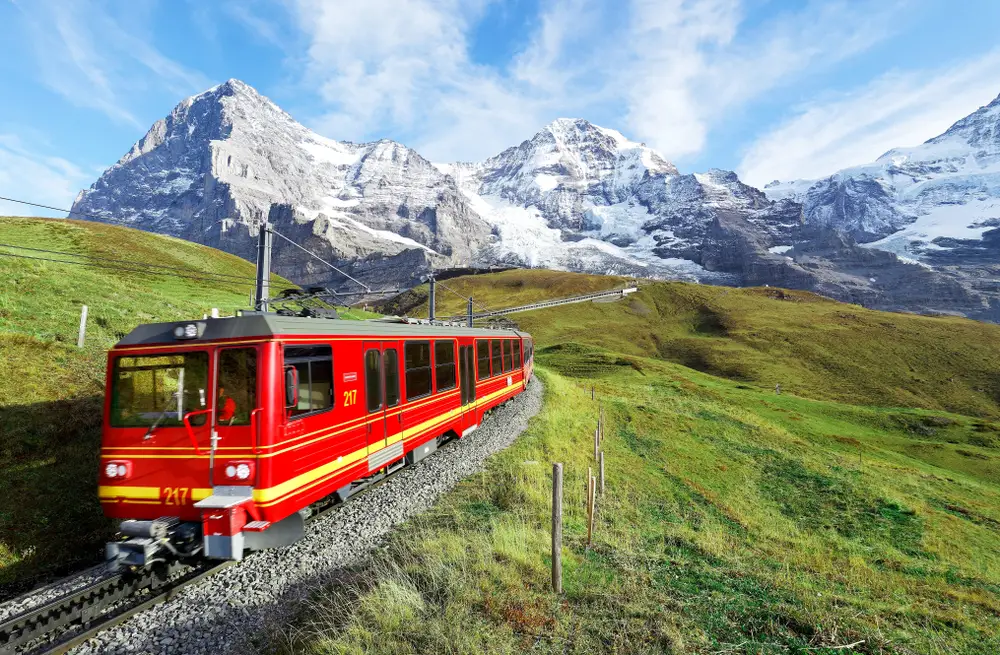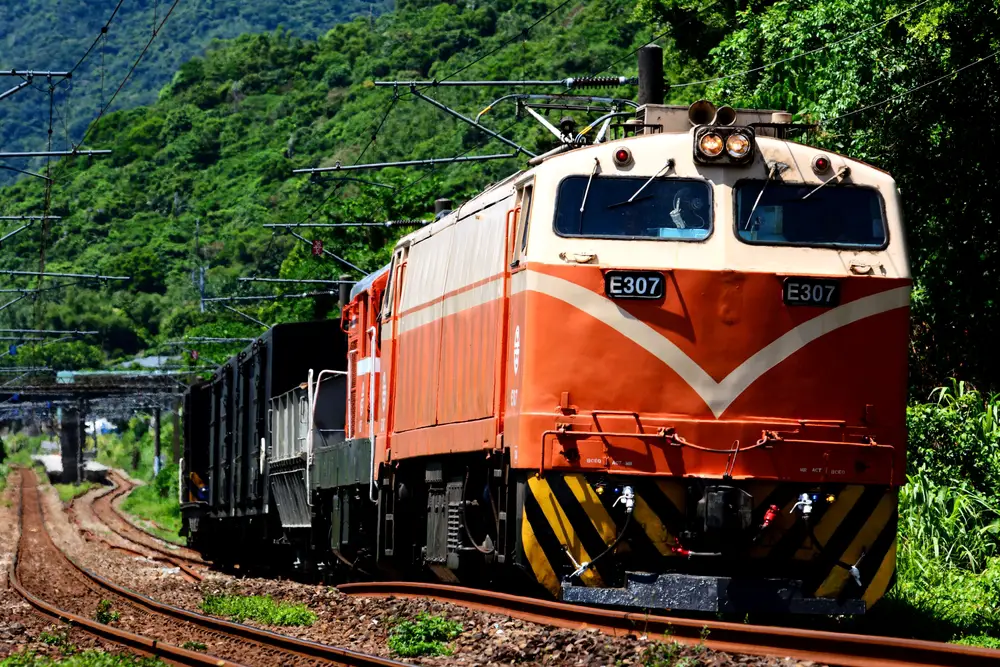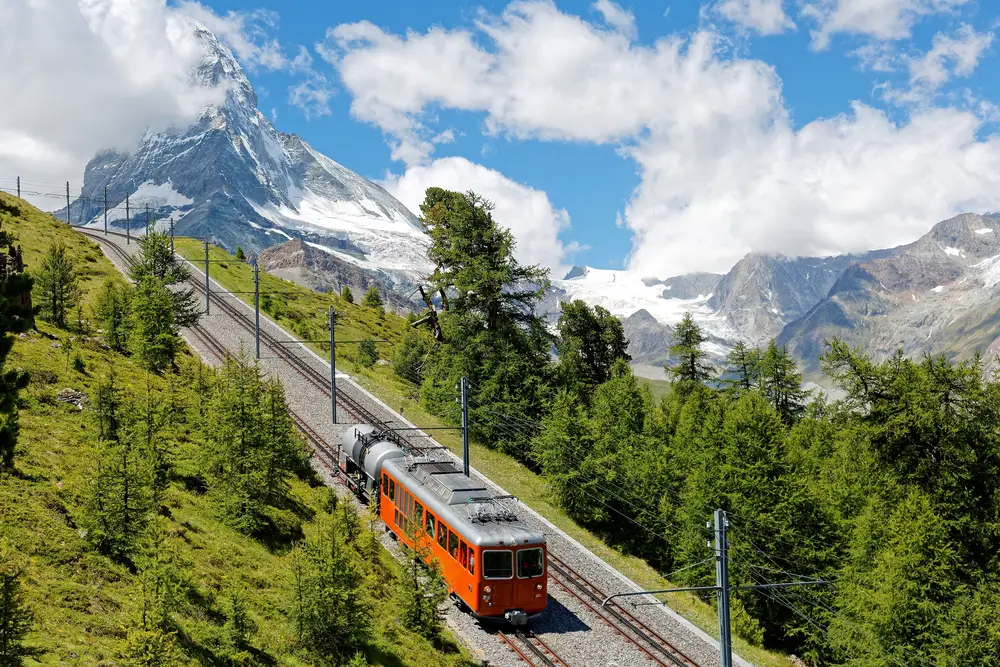
It is a picturesque scenic sight watching long trains wind their way around mountains, through tunnels, and over gorges. The technology which allows them to achieve these seemingly impossible feats of traction is fascinating and involves huge engines and clever strategies from the railroad companies.
Trains can go uphill over gradients of 4% or less, which means that for every 25 miles of track, the altitude will increase by one mile. There are railways in Switzerland with 7% gradients (one mile of height for every 13.4 miles of track); these are smaller trains with specialized locomotives.
From the outside, it seems to be an impossible task for steel-wheeled locomotives to pull very heavy trains when all they can push against are slippery steel tracks. How they do this is very interesting.
Trains Can Go Uphill
Trains have to be able to travel uphill, or it would mean that they are essentially a “one-way” form of transport.
Due to the train’s substantial mass, the trains would only be able to go up very shallow inclines if there was no intervention and application of assisting procedures.
The railroad engineers design most mainline routes so that the gradient is never more than 4%.
This means that for every 10 miles, the track will increase in elevation by 0.4 of a mile.
There are some steeper tracks in other countries (for example, Switzerland) where the gradient is 7% and conventional methods are used.
How Does The Adhesion Traction System Work?
Most trains rely on the weight of the train wheels to create friction on the railway track, which allows the wheels to “adhere” to the track. This is called the adhesive system.
Using a passenger train as an example, we assume the following.
- There is one locomotive and 12 carriages.
- Each coach weighs in at 40 tons.
- The locomotive weighs 200 tons.
In this example, the total weight the locomotive has to pull is 680 tons.
Most locomotives are driven by all six wheels. Assuming the weight is applied evenly across all the wheels, each locomotive wheel places a weight of 33 tons on a postage-sized area between the wheels and the track.
The PSI (Pounds per square inch) exerted by each wheel on the track is 66,000 Psi.
This is a very high pressure and is the proximate reason the steel wheels have sufficient traction on the steel tracks.
What Are The Factors Which Influence Trains Going Uphill?

Under standard conditions, an average freight or passenger train can go up a 4% gradient; several factors may affect this.
The Weight Of The Train
The length of an average freight ranges between 90 to 120 freight cars, while most passenger trains have less than 12 carriages.
The total weight will increase if the train pulls more wagons (or carriages). This will affect the ability of the locomotive to pull the train up steep hills.
The average freight trains travel 55 miles an hour (88km/h.), demonstrating the power and traction available for the locomotives.
The longest train in the world is the coal train which travels from the coalmines in Sishen to Saldana Bay in South Africa. This train is powered by five 15Es locomotives.
The locomotives haul 375 coal wagons which weigh 41,400 tonnes and are 2.6 miles (4.2 km) long. The route involves a 3% gradient over a 26-mile distance.
What Technologies Do Trains Use To Go Uphill?
Railroad operators have several solutions which they can apply if the weight the train has to haul is greater than the power provided by the locomotive.
Double The Hill
Double the hill involves the locomotive driver uncoupling half of the freight wagons at the bottom of the hill and pulling the balance to the top of the gradient.
At the top, the driver secures the wagons in a siding and returns to pick up the remaining wagons.
The train is reassembled at the top of the hill and proceeds on the way.
Helper Districts
Sometimes railroad companies establish helper districts on sections of their network with steep gradients.
These districts have additional locomotives which they attach to the train to assist in pulling it up the hill. Once the train has reached the crest, the helper locomotive is uncoupled and returns to the yard.
Sometimes the “helper” locomotives will remain at the top of the hill and attach to returning trains to assist with additional braking power while the trains move down the gradient.
Sand Boxes (Sanders)
Most locomotives have sandboxes affixed in the front of each traction wheel.
As the wheels move along the track, a pressurized jet of abrasive sand is pushed out of the sander’s nozzle and onto the track. As the wheels move over the sand, additional friction is created between the driving wheels and the track.
This reduces wheel slippage and increases the locomotive’s traction ability.
Making The Track Stronger Before The Gradient
Railway engineers sometimes increase the strength of the railway track immediately before the hill.
The stronger track allows the train to accelerate to higher speeds, so they can get a “run up” before the hill.
A similar technique is when the railway engineers create a descent before the hill, which also allows the trains to accelerate and achieve a run-up before the hill.
The resultant increase in momentum helps the locomotive pull the train up the gradient.
What Is The Steepest Hill A Train Can Climb?

The normal gradient of a train using the adhesion traction system can accomplish a 4% rate of climb.
Some Swiss railways have 7% gradients, and no additional technologies are in use.
They can achieve this because the trains are shorter (and lighter), and the railways have sharp curves, which create more friction and reduce slippage. They use dedicated high-torque (and low-speed) locomotives.
Gradients that are steeper than 10% require additional assistance. The commonly used technologies include.
- Rack railways
- Fell mountain railway system
- Funicular railways are driven by stationary engines (cable haulage up and down inclines).
Conclusion
Trains can go uphill as long as the gradients designed by the railroad engineers are 4%or less. When the gradient is more severe than these railroads, they must apply different strategies to ensure the trains reach the top of the hill.
